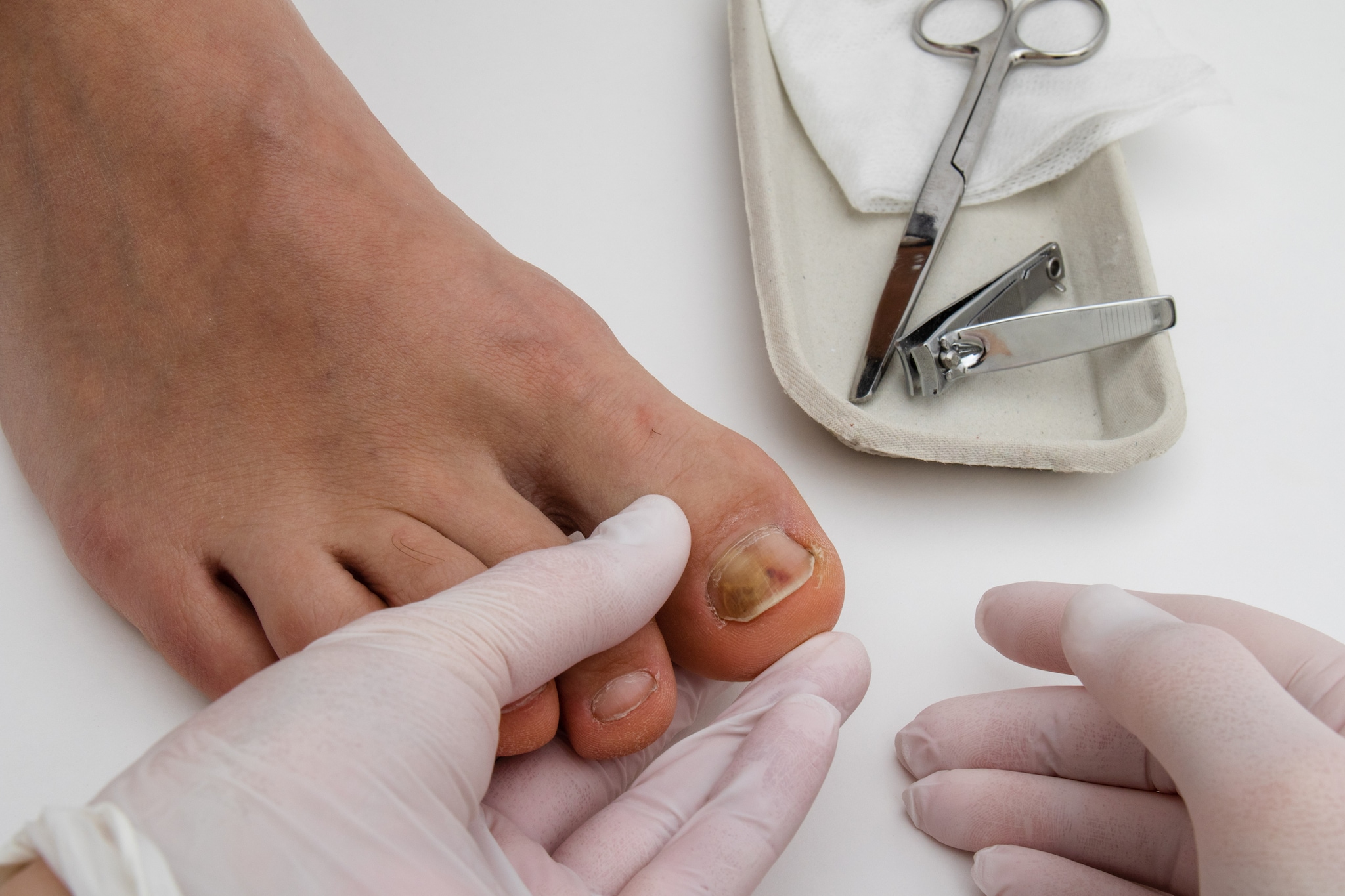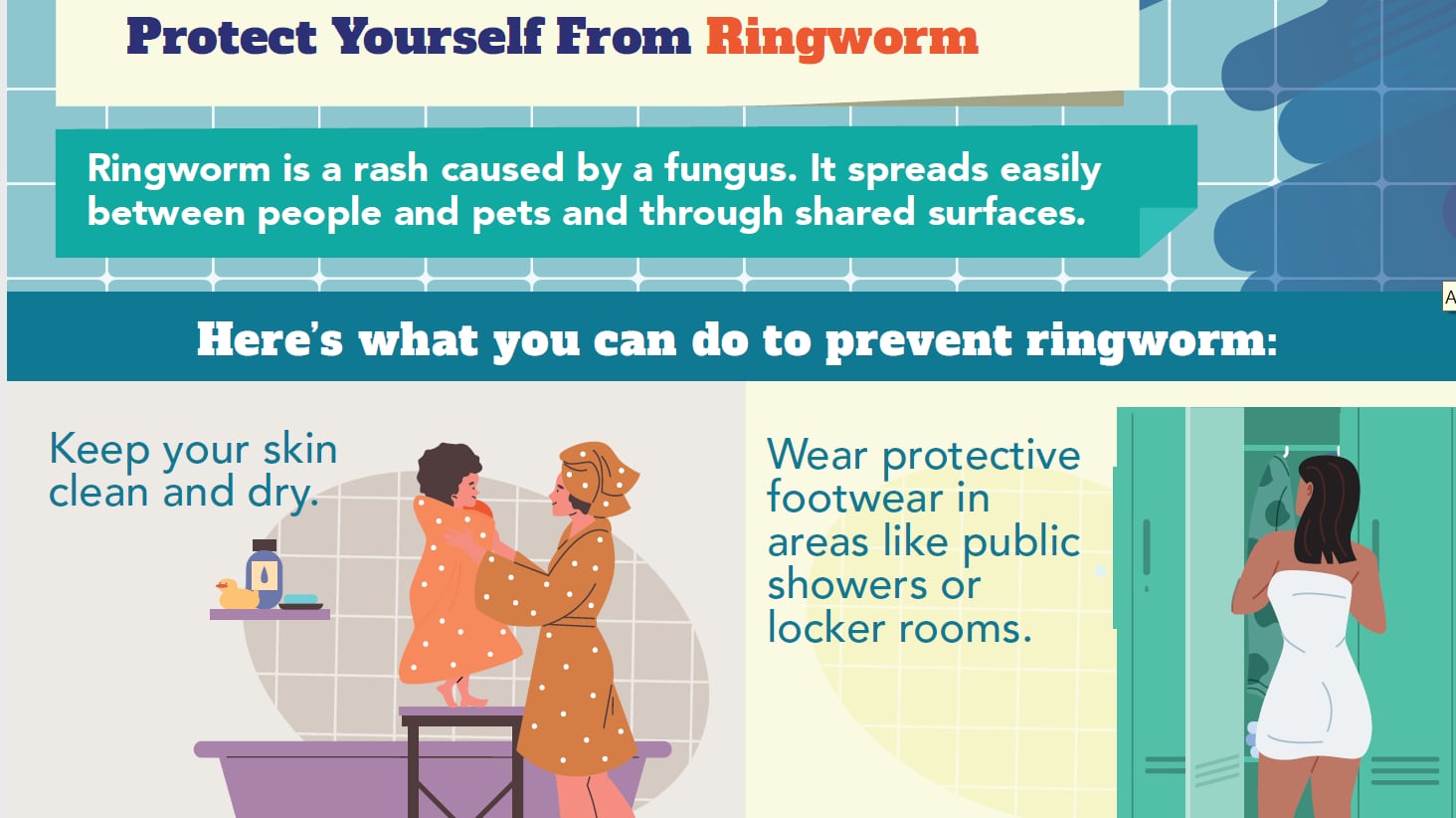Key points
- Ringworm (dermatophytosis) is a common fungal infection of hair, skin, or nails.
- Athlete's foot, jock itch, and most fungal nail infections are forms of ringworm.
- On the skin, it usually causes an itchy, red, ring-shaped rash.
- Nail infections (onychomycosis) may cause nails to change colors, become thick, and break easily.

What it is
Ringworm (tinea) is a common fungal infection of the hair (tinea capitis), skin, or nails (onychomycosis). It gets its name because it causes a ring-shaped, itchy, red rash.
Skin infections
Skin infections are more common on certain parts of the body like on the foot or groin. Ringworm on feet (tinea pedis) is often referred to as athlete's foot. Ringworm on the groin (tinea cruris) is often called jock itch.
Nail infections
Ringworm is also a common type of fungal nail infection. It can cause nails to change colors, become thick, and break easily. Although infections are much more common in toenails, fingernails can get infected.
Causes
Ringworm is caused by fungi (not a worm). The scientific names for the most common fungi that cause ringworm are Trichophyton, Microsporum, and Epidermophyton.
Ringworm is very common and can be spread by:
- Skin-to-skin contact with people or animals with the infection
- Shared objects (e.g., towels, bed sheets)
- Shared surfaces (e.g., locker room floors)
Risk factors include:
- Use of public showers or locker rooms without protective footwear
- Participating in contact sports like wrestling
- Wearing tight shoes and socks
- Excessive sweating
- Close contact with animals
Anyone can get ringworm, but people who have weakened immune systems may be especially at risk for infection. They may also have problems fighting off a ringworm infection. Learn more about how to prevent ringworm.
Testing
If you have a rash, nail infection, or symptoms of ringworm, go to a healthcare provider for testing. You may go to your primary care provider, dermatologist, or podiatrist. Symptoms of ringworm are similar to symptoms for other skin or nail conditions. Testing can help make sure you get the right treatment.

Healthcare providers may take a small skin scraping or nail sample for testing.
Treatment
The treatment for ringworm depends on its location on the body and how serious the infection is. Some forms of ringworm can be treated with non-prescription (over-the-counter) antifungal medications. However, other forms of ringworm need treatment with prescription antifungal medication.
